By Adrián MaldonadoThe Harry Potterverse is crawling with ancient artefacts and old magic. That doesn’t make it a story about archaeology as such – there is very little effort from the protagonists to do more than treasure-hunt (and in...

The Harry Potterverse is crawling with ancient artefacts and old magic. That doesn’t make it a story about archaeology as such – there is very little effort from the protagonists to do more than treasure-hunt (and in at least one case, tomb-raid) to collect and then destroy these artefacts. In one sense, the Harry Potter cycle is a parable of Fantastic Antiquities and How to Break Them.

Tom Riddle, Tomb Raider (source)
Which is why I haven’t felt the need to do an ‘archaeology of Harry Potter’ post on this blog. But then I went back to the books again. Well, sort of. I am lucky enough to share a timeline with the Binge Mode podcast by the superheroic duo Mallory Rubin and Jason Concepcion. Their breakdown of the books and films, chapter by chapter and scene by scene, with added detail culled from the wider (so wide) Potter canon, has reawakened my appreciation for the depth of JK’s creation. And, this should surprise absolutely no one by now, it makes me think there’s lessons for archaeologists in the Potterverse.
This will take more than one blog post to tease out. To begin with, we can start by looking at the vast array of antiquities which feature in the books’ own timeline. From there, we can explore how archaeology might work in the wizarding world, and then bring it back to reflections on Rowling’s uses of the past more generally. Speaking of the past, if you don’t want books from 20 years ago spoiled, well, tough look, my guy.
Medieval archaeology
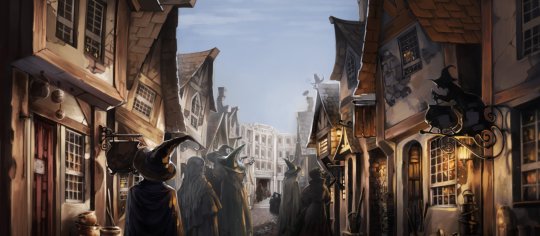
Getting medieval in Diagon Alley (source)
To begin in the most obvious place, there is a lot in the wizarding world which owes its origins to the Middle Ages. According to Rowling’s Pottermore website, Diagon Alley and its major landmarks such as the Leaky Cauldron and Gringotts go back to c. 1500, retaining a ramshackle medieval aesthetic. The prison of Azkaban originated as the fortress of the fifteenth-century sorcerer Ezkidris. Even things which don’t appear obviously medieval are revealed to be medieval on Pottermore: the Quidditch World Cup has been played since 1473, and Floo powder, the magical form of transport, was invented in the thirteenth century by Ignatia Wildsmith (which, if I have another daughter, I will definitely adopt as a name).
The structural medievalism of the Potterverse includes Hogwarts School of Witchcraft and Wizardry itself, a ponderous castle-university suffused with old magic. Oddly for Britain’s premier (only?) centre of magical learning, we do not seem to know exactly how old it is, but its founders all seem to have lived in the tenth century according to Pottermore. This would make it earlier than the first Muggle universities, themselves a product of the twelfth century and later. It is interesting to think that the robe-wearing denizens of Oxbridge and St Andrews are merely replicating earlier Hogwarts traditions.

Echoes of Hogwarts (source)
What is less immediately obvious is that Hogwarts’ medieval origins are communicated largely through material culture. The Sorting Hat belonged to founder Godric Gryffindor, and so is at least a thousand years old. The Mirror of Erised is also said to be ancient, though we are vague on dates. Does age confer magical properties, or have these objects survived due to the power of their magic? It can’t be the latter, as we are continually reminded of the precarious state of antiquities in the Potterverse. The Hogwarts houses retain stories about early medieval artefacts associated with the lives of their founders, including Rowena Ravenclaw’s lost diadem, Helga Hufflepuff’s cup, and Gryffindor’s Sword; Slytherin House has no equivalent relic-mascot although it does boast its own Chamber of Secrets (not a euphemism). Each of these objects is lost, stolen, or defiled in the course of these stories.
Ravenclaw’s diadem was lost almost as soon as it was made, and Slytherin’s Locket was never kept in Hogwarts, showing the somewhat less than reverential treatment of these artefacts, even among those who should best appreciate their value. More on Slytherin’s personal effects later, but it may be worth noting here that his Chamber was until lately populated with a living balrog, I mean Basilisk, which was at least as ancient as Slytherin before its murder by a student dangerously swinging another medieval artefact in 1998. Guys. Lock down your antiquities.
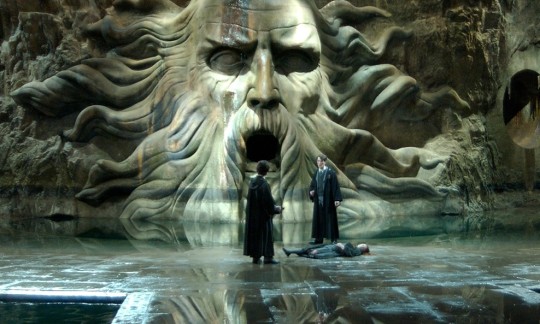
Days without an accident on site: 0 (source)
Of these artefacts, only the Sword of Gryffindor was curated to any extent, even if only as a wall-hanging which, let me repeat, students were allowed to handle. Hufflepuff’s cup was kept in the common room of its founder’s house, allowing it to be stolen and inhabited with cursed fragments of soul which almost led to the demise of the rules-based wizarding world order. In the end, Helga’s cup was found in a damn bank vault instead of a climate-controlled museum store. Listen, a secure, alarmed case may not have stopped Voldemort, but we could have at least saved these precious witnesses of wizarding origins from being callously destroyed in the war. Who will be the wizarding Mortimer Wheeler next time?
Excavating Hogwarts
Reading through Pottermore, it transpires that paying no heed to the medieval material world our protagonists live in is actively causing them harm. Two of Voldemort’s horcruxes, Slytherin’s Locket and Marvolo Gaunt’s Ring, date back to the early medieval period, but were kept as personal possessions passed down the Gaunt family line, allowing them to be easily stolen or sold, and, again, be haunted by evil curses. Guys. Where do I send my CV to develop a course in Material Culture Studies at Hogwarts? Better yet, let’s make it a MOOC, train members of the public, and then maybe next time someone tries to pawn an ancient relic our world isn’t threatened by cursed archaeology.
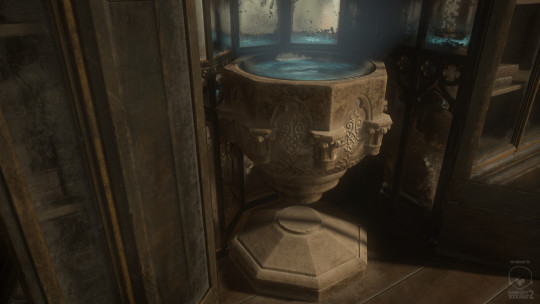
Please don’t drink from the archaeology (source)
My favourite revelation is that the Hogwarts pensieve, the expositional device in Dumbledore’s office which allows Harry to experience flashback sequences along with the reader, is a noted antiquity itself. It is said to be a stone basin inscribed with Saxon runes, and to have been found buried on the spot where Hogwarts would be built.
I can’t just pass this by. Why would a pensieve be buried? We know that wizards are buried with their wands, as recounted to plot-driving effect in Dumbledore’s case. It also transpires that, like wands, pensieves are very personal items, and are customarily buried with their owners along with any memories they have stored. What an incredible boon this would be for a wizarding archaeologist! And how well would this explain all the now-empty vessels we have found used as grave goods since prehistory, usually explained by us dull-minded archaeologists as ‘food-offerings’. Along with the spell priori incantatem, which allows one to see the last few spells a wand was used for, an archaeowitch encountering a burial furnished with wand and pensieve would have an unparalleled insight into the lives and deaths of the wizarding dead.
Back to the Hogwarts pensieve, then, we have a massive stone basin inscribed in Saxon runes, which would be rather out of place in the early medieval Scottish highlands, where Hogwarts is based. Is this a disturbed wizard’s tomb or a ritualised offering in a wetland setting? Once upon a time, this find would be taken as evidence for Anglo-Saxon invasion, but now we recognize that objects could be transported for a variety of reasons, and indeed are themselves more likely to be used in votive deposits due to the value they have accrued in the journey. It would certainly merit further investigation whether the Hogwarts loch was chosen by its founders not for its now-isolated and depopulated landscape, itself a product of fairly recent historical processes, but because it had an existing heritage as a site of ritual deposition. We can only hope, for the sake of its students, that the founders undertook some due-diligence magical remote sensing to detect any complicating factors from buried magic, dark or light, before undertaking a major construction project. But beyond health and safety concerns, I feel that we have lost something else by not recording what has presumably been a cult place.
A medieval inheritance
Pottermore also traces the origins of several major wizarding families to the Middle Ages, most notably the Malfoys. Their lineage can be traced back to Armand Malfoy, who helped William the Bastard become Conqueror of England in the real-world timeline: “Having rendered unknown, shady (and almost certainly magical) services to King William I, Malfoy was given a prime piece of land in Wiltshire, seized from local landowners, upon which his descendants have lived for ten consecutive centuries.” In gratitude for their help with the Norman Conquest, he was granted a manor, which has passed down the family for 1000 years to Draco Malfoy. The mansion itself is said to be filled with ancient magical and muggle artefacts and priceless artwork, as so many stately homes were by the nineteenth century. Many of Britain’s museums were founded through bequests of such private collections, and these would make an interesting, if dangerous, Dark Magic wing of a Wizarding Museum. Given the spectacular fall from grace of the Malfoy family in the second wizarding war, I do worry about the status of the Malfoy collection, and whether it is at risk of being hived off in auction. The Draco Malfoy essay does reveal that he still lives in the manor with its artefacts after the war, so we still live in hope that this heritage resource has not been lost.
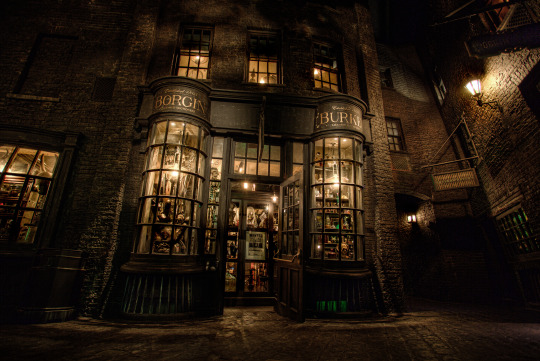
Even dark artefacts need curators (source)
In light of their family history, it would be easy to laugh off the Malfoys’ malevolence as the entitlement that comes from old money, but it should be noted that Harry Potter is a noted trust-fund baby himself. For all his remarkable magical prowess, Harry Potter’s destiny is also down to some serious inherited privilege. His medieval progenitor Linfred of Stinchcombe, who also lived in the Norman era, built up the family’s wealth through his famous inventions, including potions like Skele-gro. Their marriage into a wealthy family in Godric’s Hollow is also auspicious – as home to the Peverils and the Dumbledores, whose stories are so indelibly entwined in the history of wizarding Britain, this little village in England’s west country seems to have been the epicentre of magical achievement for a millennium. Something in the water, perhaps? Or a self-segregating community of elite families? It is through these connections that the Potter family came into possession of one of the Deathly Hallows, the invisibility cloak, in another form of inheritance which increasingly looks like the secret of Harry’s success.
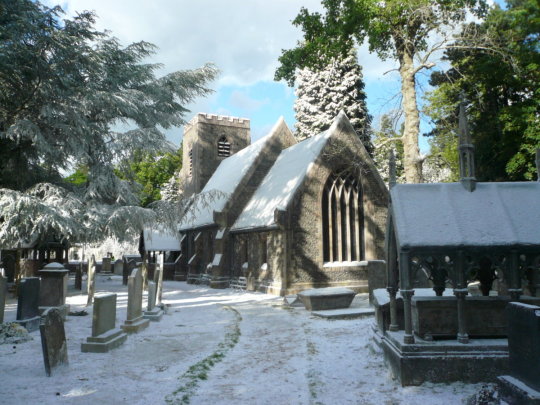
Godric’s Hollow - in dire need of graveyard survey (source)
The Hallows themselves are the key to Dumbledore and Harry’s success, and Voldemort’s undoing, Unbeknownst to many, the Resurrection Stone, invisibility cloak and Elder Wand all seem to be inventions of the Peveril brothers in the thirteenth century. We know this partly because Harry and Hermione stumble on Ignotus Peveril’s medieval gravestone in the churchyard of Godric’s Hollow, clearly marked with the sign of the Deathly Hallows, at which point things begin to come together. Basically, Voldemort is able to be defeated because he only trafficked in antiquities, without researching their archaeological context – but in fairness, neither did Dumbledore and Harry until very late in the game. A simple bit of churchyard recording may have brought this to the attention of local history buffs much sooner, and we may all have been safer for it. Basically, folks, local heritage is all of our heritage, and is not just for tourists obsessively chasing only their own family history.
Potter’s pedigree
And so we come to genealogy, which is the secret engine of this cycle of stories, just as it seems to be in so many of our favourite fantasy worlds. The objects, people and places profiled here all seem to be the remnants of stories which seem to begin no earlier than the tenth century or so. But it is clear that the wizarding world existed before then, and the limits of our vision can be explained by the fact that the first university was established at that time, and presumably the recording of historical events as well. In short, the narrow focus on a small pool of influential families and their feuds are the unresolved business of the formation of medieval kingdoms of England, Wales, Scotland and Ireland, as indeed is so much of our own contemporary politics. What if our consciousness extended to the messier early medieval kingdoms, or (whisper it) prehistory? Just how problematic would a wizarding archaeology be? And could it free us from the Great Men and Their Battles vision of the human journey? Let’s pick up our trowel-wands and find out.
***
Forward to Part 2: Excavating Magic
Follow us on @AlmostArch












